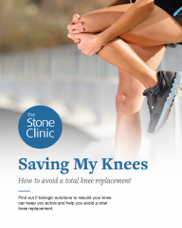PCL repair rehab protocol
- Patients are weight bearing as tolerated with crutch use as needed post-operatively
- Range of motion will be blocked from 0 - 20° in a brace for ADL's and all exercises for 4 weeks
- Important not to push for extension past 0° for 6 - 8 weeks post-op to protect capsular repair
- No resisted knee flexion exercises for 6 - 8 weeks post-op
- Regular manual and self-mobilization of the patella, patella tendon, and portals should be performed to prevent fibrosis
- Return to sport and activities is dependent upon passing a functional, sports test
- Driving is permitted once your leg is strong and coordinated to react safely to avoid an accident. Driving is often resumed after the first week or two and when all pain medications/narcotics are no longer needed. Also, surgical leg and type of car are considered before being cleared to drive. Ask your PT if you are ready to safely return to driving
Week 1:
- MD visit Day 1 post-op for dressing change, review of medications, and instruction on home program
- Gait training, pain and edema control, and muscle stimulation to improve quadriceps recruitment
- Ankle pumps, quad and adduction sets, leg raises in multiple planes (except hip extension)
- Mild isometric-resisted knee extension. General stretching program
- Well-leg stationary cycling and UBE. Upper body weight machines and trunk exercises
Weeks 2 - 4:
- Progress weight bearing and functional mobility as able to demonstrate good mechanics
- Passive extension stretching to 0° only to protect the capsular repair
- Submaximal quad, glute and abduction/adduction isometrics within the range restrictions
- Knee bends (0 - 20°), calf raises, weight shifting, ankle exercises, balance and proprioception exercises
- Patella, suprapatellar pouch, and scar mobilization regularly
- Short-range stair machines as able. Pool walking and workouts as soon as incisions are well-healed
Weeks 4 - 6:
- Brace from 0 - 70° for day-to-day activities and exercises
- Submaximal quad and knee extension isometrics through multiple ranges
- Prone hip extension exercises in extension only
- Light resistance leg press within range restrictions, abduction/adduction, and hip machines at the gym
- Increase depth of weight shifting, knee bends, step-ups and proprioceptive exercises within range
- Initiate two-legged bicycling for range of motion only and without resistance
Weeks 6 - 8:
- Increase range of motion to full in the brace and wean off when range of motion is 0 - 120°
- Introduce hamstring curls against gravity without resistance. Focus on eccentrics
- Continue to increase intensity and resistance of other exercises
- Goals are to increase passive and functional range of motion
Weeks 8 - 12:
- Continue with all exercises
- Add lateral exercises (i.e. lateral stepping, lateral step-ups, etc.)
- Begin hamstring flexion exercises against light resistance (i.e. open-chain, hamstring curls)
- Continue all exercises with emphasis on closed-chain, functional, and proprioceptive program
- Fit for functional PCL brace to be used with sporting activities and more ballistic rehab exercises
- Increase resistance of cycling, stair machine, and pool programs
Weeks 12 - 16:
- Goals are to increase strength, power, and cardiovascular conditioning
- Sport-specific exercises and training program
- Maximal eccentric-focused strengthening program
- Begin light running program as able to demonstrate good strength and mechanics
Months 4 - 6:
- Goals are to develop maximal strength and power, and to advance to sporting activities
- Resisted closed-chain rehabilitation through multiple ranges
- Running program, balance drills, and agility program
- Initiate plyometric training as able to demonstrate adequate strength and proper mechanics
NOTE: All progressions are approximations and should be used as a guideline only. Progression will be based on individual patient presentation, which is assessed throughout the treatment process.

